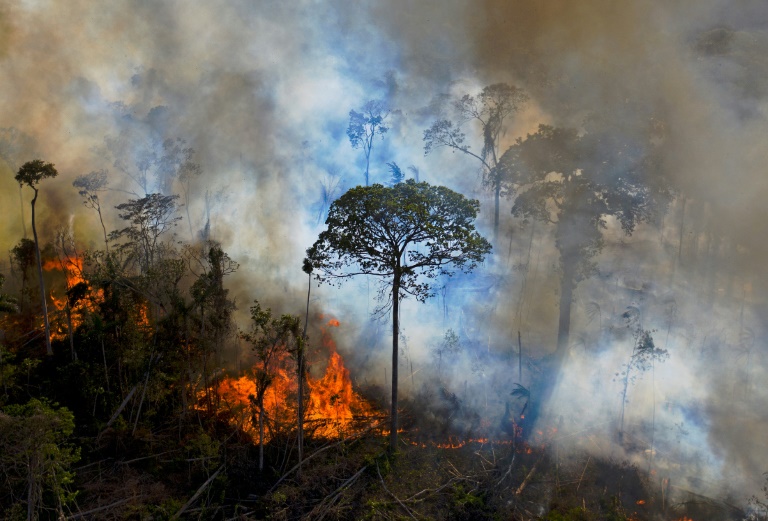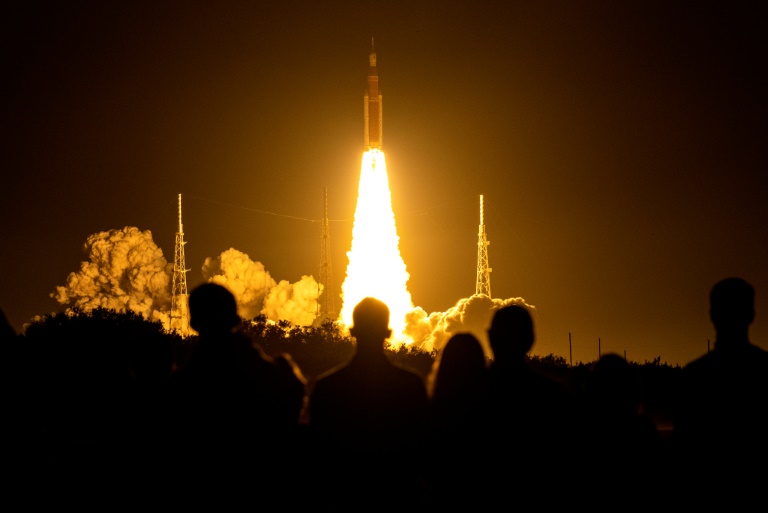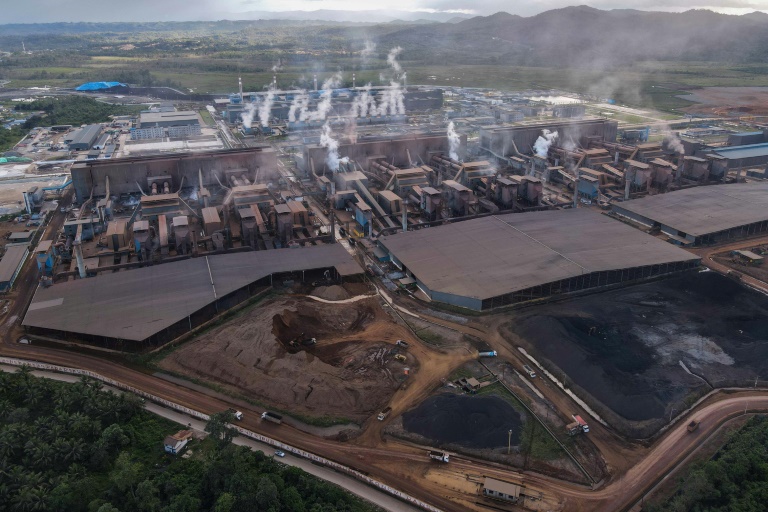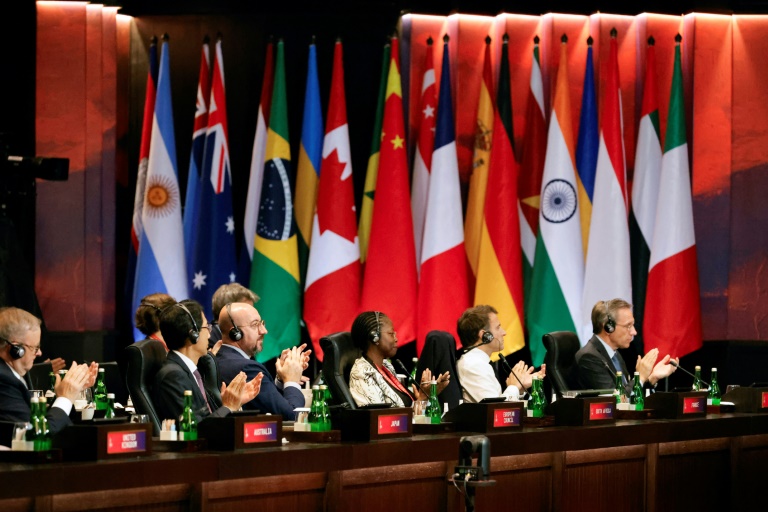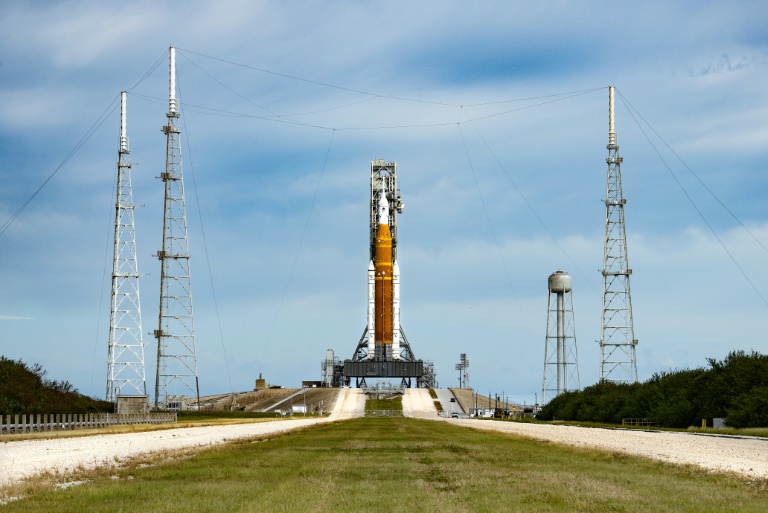Brazil's Lula, world leaders bolster UN climate talks
Deforestation in the Brazilian Amazon rainforest has been rampant in recent years
UN climate talks got a boost Wednesday as Brazilian president-elect Luiz Inacio Lula da Silva launched the country back into the battle to curb warming and global leaders reaffirmed key pledges.
With G20 leaders issuing a final communique committing to pursue the more ambitious limits on global heating, momentum at the climate meeting in Egypt was generated at the sidelines of the fraught negotiations.
Lula kicked off a day of events Wednesday with a call to host the 2025 climate talks in the Amazon region, in his first international trip since defeating outgoing far-right President Jair Bolsonaro, who presided over years of rampant Amazon deforestation.
“I am here to say to all of you that Brazil is back in the world,” said Lula as he received a hero’s welcome from hundreds of people applauding him at an Amazon region pavilion in the Red Sea resort of Sharm el-Sheikh.
“Brazil was not born to be an isolated country,” said Lula, who was due to deliver a speech later on Wednesday.
“We will put up a very strong fight against illegal deforestation,” he said, announcing the creation of a ministry of Indigenous people to protect the vast region’s vulnerable communities.
Lula arrived in Egypt on Tuesday and went straight into climate diplomacy with meetings with US envoy John Kerry and China’s Xie Zhenhua.
– Kerry ‘pleased’ –
Kerry told a COP27 biodiversity panel on Wednesday that the United States would work with other nations to help protect the Amazon.
“I was pleased last night to meet with president-elect Lula and was really encouraged by the ways in which he talked about for once and for all getting it right… in order to preserve the Amazon,” Kerry said.
Under Bolsonaro, a staunch ally of agribusiness, average annual deforestation increased 75 percent compared with the previous decade.
“We need a new sense of hope to build trust and momentum towards a positive outcome at COP27,” said Brazilian climate campaigner, Mariana Paoli, Christian Aid’s global advocacy lead.
“President Lula’s election victory in Brazil has the potential to breathe new life into this process with his progressive agenda that seeks to bring Brazil back to the table and end the disastrous climate policies of his predecessor.”
In another boost to the UN climate process, a final communique from world leaders meeting at the Group of 20 talks in Bali, Indonesia included key promises to “pursue efforts” to curb global warming to 1.5 degrees Celsius above pre-industrial levels, a safer limit according to scientists.
The document, which also reiterated a commitment to phase out “inefficient” fossil fuel subsidies over the medium term, was welcomed by observers as a way to galvanise the climate talks as they enter their final days.
The G20 meeting was also the stage of a crucial meeting between US President Joe Biden and China’s Xi Jinping, where the two leaders agreed to resume their climate cooperation.
Ani Dasgupta, head of the World Resources Institute, said positive signals from leaders at the G20 “should put wind in the sails” of negotiators in Egypt.
– Climate leadership –
Bolsonaro, who did not attend the G20 summit in Bali, has maintained a low profile since losing the Brazilian election.
While his government has a pavilion at COP27, former steelworker Lula deployed two of his former environment ministers to lay the groundwork for his visit.
One of them, Marina Silva, who is tipped to return to the job when Lula takes office on January 1, said Brazil wants to set an example with Lula’s plan to fight deforestation.
Latin America’s most populous country grew more isolated under Bolsonaro, analysts say, in part due to his permissive policies towards deforestation and exploitation of the Amazon — the preservation of which is seen as critical to fighting global warming.
Brazil is home to 60 percent of the Amazon, which spans eight countries and acts as a massive sink for carbon emissions.
Silva promoted the idea of creating a new national authority to coordinate climate action among government ministries, and of pursuing a reforestation target of 12 million hectares (over 29 million acres).
The incoming administration wants the United States to contribute to the Amazon Fund, considered one of the main tools to reduce deforestation in the planet’s biggest tropical forest.
Following Lula’s victory, the fund’s main contributors, Norway and Germany, announced they would participate again, after freezing aid in 2019 in the wake of Bolsonaro’s election.
Colombian President Gustavo Petro and his counterpart Nicolas Maduro of Venezuela presented at COP27 last week an Amazon protection initiative that they hope Brazil will join.

